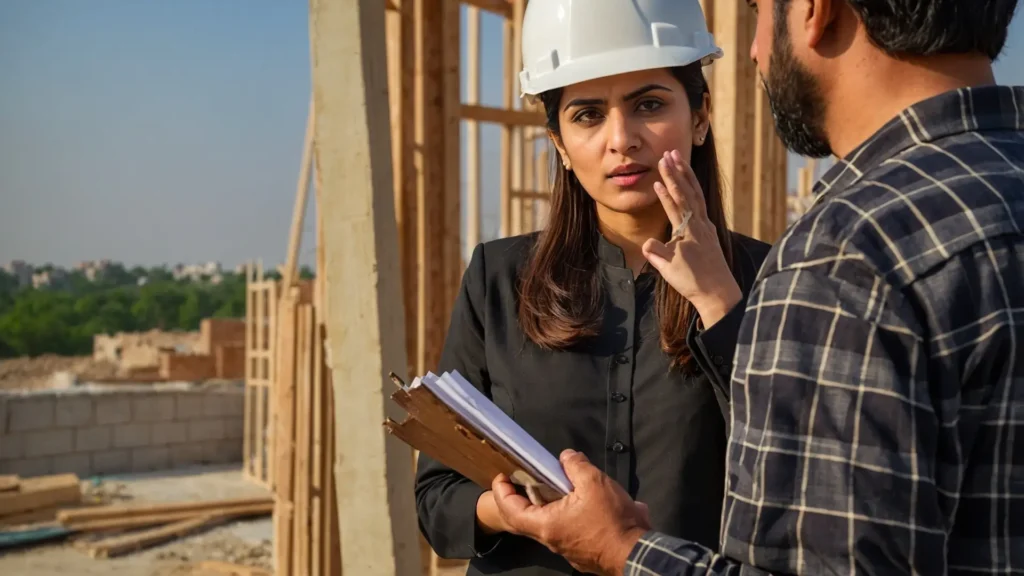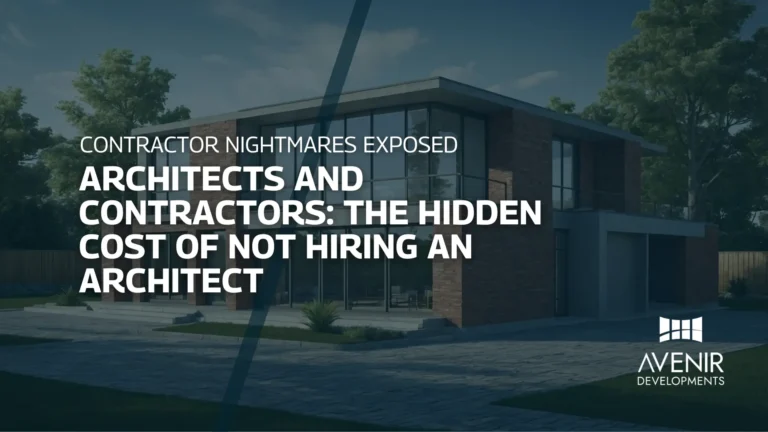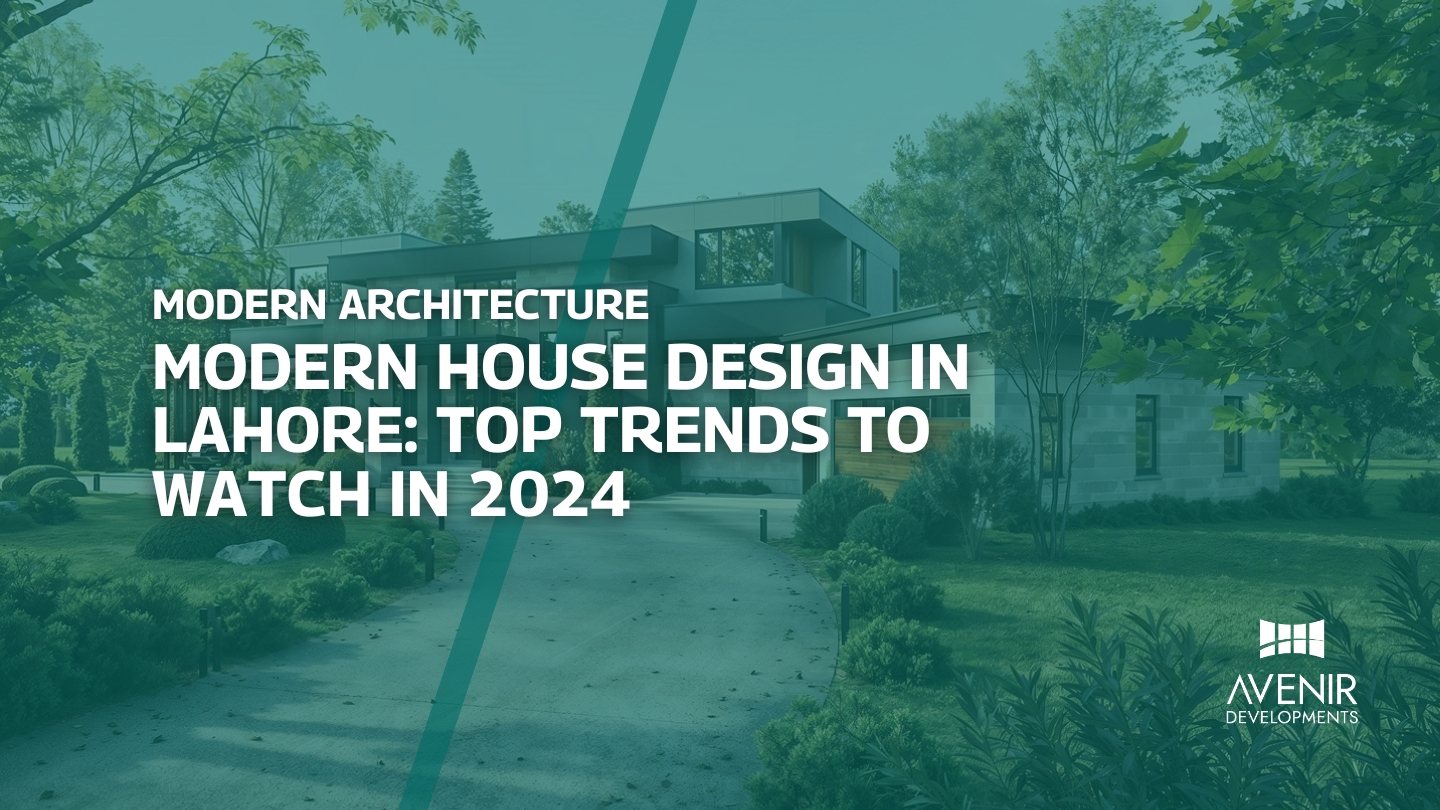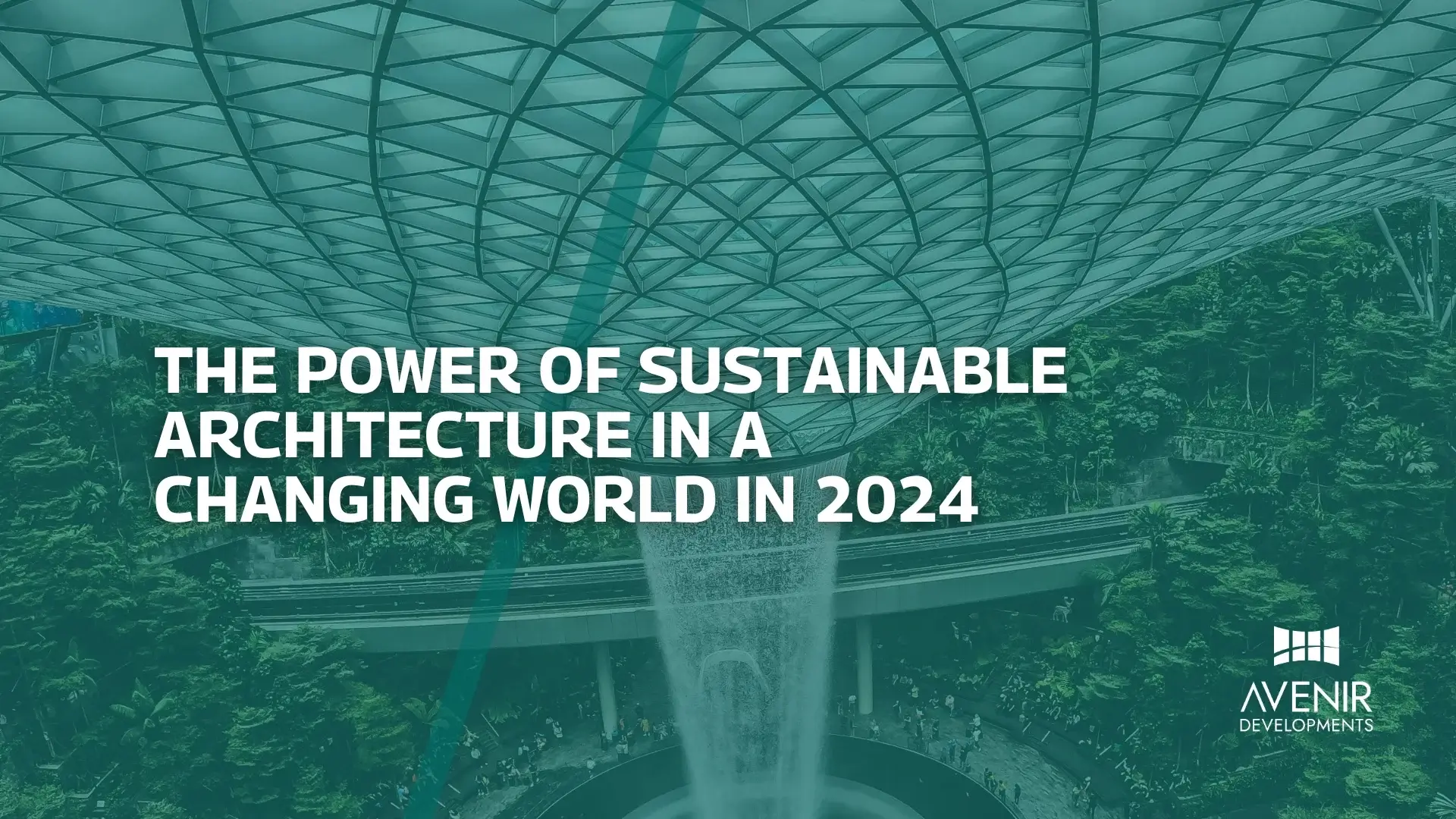Architects and contractors: a seemingly perfect partnership, right? Well, as an architect, interior designer, and custom home builder with over 15 years of experience across Lahore, Islamabad, and beyond, I’ve seen the underbelly of what happens when these two critical players don’t work in harmony. From a luxury villa in Dubai where the pool ended up in the living room (yes, really) to a humble home in Lahore where the roof couldn’t handle monsoon rains, the hidden cost of not hiring an architect can be devastating. Let me share some of the nightmares I’ve witnessed, both near and far, to shed light on why this seemingly “optional” expense can save you a fortune – and your sanity.
The Architect’s Role: Much More Than Pretty Pictures
Okay, let’s get this out of the way: architects are not just about making buildings look good. Sure, aesthetics are important, but that’s just the tip of the iceberg. An architect is a project’s backbone, responsible for:
- Design: Translating your vision into a functional and beautiful plan that considers your lifestyle, budget, and the unique challenges of your site.
- Technical Expertise: Understanding building codes, regulations, structural engineering, and sustainability principles to ensure your home is safe, efficient, and compliant.
- Project Management: Overseeing the entire construction process, from design to completion, ensuring that everything is built according to plan and on schedule.
- Contractor Liaison: Acting as your advocate, communicating your needs to the contractor, reviewing their work, and resolving any issues that may arise.
- Quality Control: Ensuring the quality of materials and workmanship meets the highest standards, protecting your investment.
- Problem-Solving: Identifying potential problems before they become costly issues and finding creative solutions to unexpected challenges.
This isn’t just about a Pakistani approach, either. The American Institute of Architects (AIA), the Royal Institute of British Architects (RIBA), and similar bodies worldwide emphasize the architect’s role as a protector of public interest and a champion of quality design and construction. Does this sound like someone you’d want on your side during a major construction project? Hold that thought.

Trends in Pakistan’s Construction Industry: The Architect’s Value Is Rising
Pakistan’s construction sector is booming, with the government actively promoting development through projects like the Ravi Riverfront Urban Development Project and the Naya Pakistan Housing Program. The construction industry is projected to grow by 7.61% in 2024 alone, according to the Pakistan Economic Survey 2023-24.
In this fast-paced environment, the role of architects is evolving and becoming even more critical. Here’s what we’re seeing in 2024:
- Increased Demand for Sustainable Design: With the government’s push for green building initiatives, architects are increasingly sought after for their expertise in designing energy-efficient and environmentally friendly buildings.
- Focus on Urban Regeneration: As cities like Lahore and Islamabad expand, there’s a growing need for architects who can revitalize older areas and create vibrant, livable communities.
- Technological Advancements: Building Information Modeling (BIM) and other technologies are revolutionizing the way architects design and collaborate with contractors, leading to more efficient and cost-effective projects.
- Rising Awareness of Design’s Impact: Homeowners and businesses alike are recognizing the value of good design, not just for aesthetics but also for functionality, productivity, and overall well-being.
However, the rise in construction activity also brings challenges. The shortage of skilled labor, rising material costs, and the risk of natural disasters (like the 2022 floods) make the construction process even more complex. This is where the architect’s project management skills and ability to mitigate risks become invaluable.
What Could the Government Do?
While the government’s initiatives are commendable, there’s still room for improvement. Here are a few suggestions:
- Strengthen Building Codes: Update and enforce stricter building codes to ensure safety and resilience in the face of natural disasters.
- Promote Architect-Led Projects: Encourage the use of architects in both public and private sector projects to ensure quality design and construction.
- Invest in Education: Support architectural education and training programs to nurture a new generation of skilled professionals.
- Streamline Approvals: Simplify the permitting and approval process to reduce delays and costs.
By taking these steps, the government can not only boost the construction industry but also elevate the standards of design and construction across Pakistan.
FAQs: Your Burning Questions About Architects and Contractors
Let’s address some common questions I hear from potential clients, whether they’re in Lahore, Islamabad, or overseas:
Q: Isn’t hiring an architect just an added expense?
A: While it’s true that architects charge fees, their involvement can actually save you money in the long run. They help you avoid costly mistakes, optimize your design for cost-efficiency, and get the best value from your contractor. According to the AIA, every dollar invested in architectural services yields a return of $4 to $9 in construction costs.
Q: Should I hire an architect or a contractor first?
A: Ideally, you should hire an architect before you hire a contractor. This way, the architect can guide you through the design process, develop a comprehensive plan, and help you select a contractor who is a good fit for your project.
Q: What if I already have a contractor in mind?
A: Even if you’ve already chosen a contractor, it’s not too late to bring in an architect. They can still review the contractor’s proposal, ensure it aligns with your vision and budget, and act as your advocate throughout the construction process.
Q: Can’t I just rely on my contractor for design and project management?
A: While some contractors offer design-build services, they may not have the same level of expertise or design sensibility as a licensed architect. Additionally, their primary focus is on construction, not necessarily on optimizing your design for long-term value and satisfaction.
Q: How much does it cost to fix contractor mistakes?
A: The cost of rectifying contractor errors can vary widely depending on the severity of the issue. It could range from a few thousand rupees for minor repairs to hundreds of thousands or even millions for major structural problems. An architect can help you avoid these costly mistakes by ensuring the work is done right the first time.
Q: What happens if you build without an architect?
A: Building without an architect can lead to a host of problems, including:
- Design flaws: Poorly designed spaces that don’t function well or meet your needs.
- Construction delays: Lack of coordination and communication between different trades.
- Cost overruns: Unexpected expenses due to design changes or unforeseen problems.
- Quality issues: Substandard materials and workmanship.
- Legal disputes: Disagreements with contractors over scope of work or payment.
Q: Can an architect help resolve disputes with a contractor?
A: Yes, an architect can act as a mediator between you and your contractor, helping to resolve disputes and ensure that your project stays on track.
Q: Where can I find a qualified architect in Lahore or Islamabad?
A: The Pakistan Council of Architects and Town Planners (PCATP) maintains a directory of licensed architects in Pakistan. You can also ask for recommendations from friends, family, or colleagues who have recently built or renovated their homes.
I hope this Q&A session has addressed some of your concerns. Let’s move on to the final section, where I’ll share some expert tips.
Expert Tips: How to Hire the Right Architect (and Avoid Contractor Nightmares)
Based on my years of experience in the industry, here are my top tips for finding the right architect and ensuring a smooth construction process:
- Do Your Research: Don’t just hire the first architect you come across. Look for someone with experience in your type of project (residential, commercial, etc.) and a design style that resonates with you. Ask for references and check out their portfolio.
- Check Credentials: Make sure the architect is licensed by the PCATP and has professional liability insurance. This protects you in case of errors or omissions in their work.
- Clearly Define Your Needs: Before you meet with an architect, have a clear idea of your budget, timeline, and desired outcomes for the project. This will help the architect tailor their services to your specific needs.
- Ask for a Detailed Proposal: The architect should provide you with a detailed proposal outlining their scope of services, fees, and estimated timeline for the project. Make sure you understand all the terms and conditions before signing any contracts.
- Communicate Openly and Honestly: Establish a good rapport with your architect and be transparent about your expectations, concerns, and budget. The better the communication, the smoother the process will be.
- Trust the Process: Building a house or commercial space can be stressful, but trust that your architect has your best interests at heart. They are your advocate and will guide you through every step of the journey.
- Don’t Skip the Design Phase: The design phase is crucial for ensuring that your project meets your needs and budget. Rushing through this phase can lead to costly mistakes and changes later on.
- Get Multiple Bids: Don’t just accept the first contractor’s bid. Get at least three bids from reputable contractors to ensure you’re getting the best value for your money.
- Review Contracts Carefully: Make sure you understand the terms of both your contract with the architect and your contract with the contractor. Have a lawyer review them if necessary.
- Stay Involved: Visit the construction site regularly to monitor progress and address any concerns with your architect or contractor.
By following these tips, you can significantly reduce the risk of encountering contractor nightmares and ensure that your construction project is a success.
The Architect: Your Shield Against Construction Chaos
The old adage, “penny wise, pound foolish,” rings especially true when it comes to building your dream home or commercial space. The allure of saving a few rupees by skipping the architect might seem tempting, but as we’ve seen, the hidden costs can be astronomical.
From the grand villas of Dubai to the bustling streets of Lahore, the stories I’ve shared are a testament to the architect’s indispensable role. They are not simply designers, but navigators, problem-solvers, and protectors of your investment.
In a rapidly growing market like Pakistan’s, where construction is both an opportunity and a challenge, architects are more essential than ever. They help you navigate the complexities, embrace sustainable practices, and ultimately, create spaces that enhance your life.
So, the next time you embark on a construction project, remember: the hidden cost of not hiring an architect might just be the most expensive mistake you’ll ever make.
Don’t let your dream home or commercial space become a construction nightmare. Contact Avenir Developments today. We’ll guide you through the entire process, from conceptualization to completion, ensuring your project is a success from start to finish.
While it might seem tempting to save money by forgoing the services of an architect, the long-term consequences can be significant. Here’s why:
1. Increased Costs Due to Mistakes: Without proper planning and oversight, construction projects can be riddled with errors and omissions. These mistakes can lead to costly rework, delays, and potential legal issues. According to a study by the American Institute of Architects (AIA), projects without architects often experience cost overruns of 10-20%.
2. Reduced Property Value: A poorly designed or constructed building can negatively impact its resale value. Potential buyers may be hesitant to purchase a property with significant defects or a lack of curb appeal. Architects can help ensure that your building meets or exceeds market standards, maximizing its value.
3. Safety Concerns: Building codes and regulations are complex and constantly evolving. Without the expertise of an architect, it’s easy to overlook important safety requirements. This can lead to hazardous conditions that pose a risk to occupants and visitors. A well-designed building prioritizes safety and minimizes potential hazards.
4. Inefficient Use of Space: A lack of proper planning can result in inefficient use of space. Rooms may be too small or too large, and storage areas may be inadequate. An architect can optimize the layout of your building to maximize its functionality and usability.
5. Environmental Impact: Buildings have a significant impact on the environment. Architects can help design structures that are energy-efficient, sustainable, and minimize their environmental footprint. By incorporating sustainable design elements, you can reduce your long-term operating costs and contribute to a healthier planet.
Beyond the direct financial implications, not hiring an architect can also lead to:
1. Increased Stress and Anxiety: Building projects can be stressful, even for those with experience. Without the guidance and support of an architect, homeowners may find themselves overwhelmed by the complexities of the process. Architects can provide expertise, problem-solving, and peace of mind throughout the construction journey.
2. Delayed Completion: Construction projects without proper planning and oversight often experience delays. These delays can lead to increased costs, inconvenience, and frustration. Architects can help streamline the process and ensure that the project is completed on time.
3. Reduced Energy Efficiency: A well-designed building can significantly reduce energy consumption and operating costs. Without the expertise of an architect, it’s easy to overlook energy-saving features that can have a long-term impact on your bottom line.
4. Legal and Liability Issues: Construction projects can involve complex legal and liability concerns. Architects can help navigate these issues and protect your interests. By ensuring that the project complies with all relevant codes and regulations, you can minimize your risk of legal disputes.
5. Missed Opportunities for Customization: Architects can help you realize your vision for your building. By working with an architect, you can customize your space to meet your specific needs and preferences. This can result in a more enjoyable and personalized living experience.
While the initial cost of hiring an architect may seem like a significant investment, the long-term benefits can far outweigh the upfront expense. By working with a qualified professional, you can avoid costly mistakes, reduce stress, ensure timely completion, improve energy efficiency, protect your interests, and create a truly customized living space.
When considering hiring an architect, it’s important to keep the following factors in mind:
1. Experience and Expertise: Look for an architect with experience in the type of project you are planning. Whether it’s a residential, commercial, or industrial project, an architect specializing in that area will have the necessary knowledge and skills to deliver a successful outcome.
2. Communication and Collaboration: Effective communication is essential for a successful architect-client relationship. Look for an architect who is easy to work with, listens to your needs, and is responsive to your questions and concerns.
3. Portfolio and References: Review the architect’s portfolio to see examples of their previous work. This will give you a sense of their design style and capabilities. Additionally, ask for references from previous clients to get their feedback on the architect’s professionalism and quality of work.
4. Fees and Contracts: Discuss the architect’s fee structure and payment terms upfront. Be clear about what services are included and any additional costs that may arise. A well-defined contract can help protect your interests and ensure a smooth working relationship.
5. Compatibility: It’s important to feel comfortable and confident working with your architect. Consider their personality, communication style, and overall approach to the project. A good architect will be able to establish a positive and productive working relationship.
By carefully considering these factors, you can select an architect who is the right fit for your project and can help you achieve your desired outcome.
In conclusion, while hiring an architect may involve an upfront cost, the long-term benefits can far outweigh the initial investment. By working with a qualified professional, you can avoid costly mistakes, enhance the value of your property, ensure safety, optimize space utilization, and minimize your environmental impact.
Reach out to us on WhatsApp or call +92 300 110 1103 for a free consultation. Let’s discuss your vision and how we can help you achieve it – without the hidden costs.






